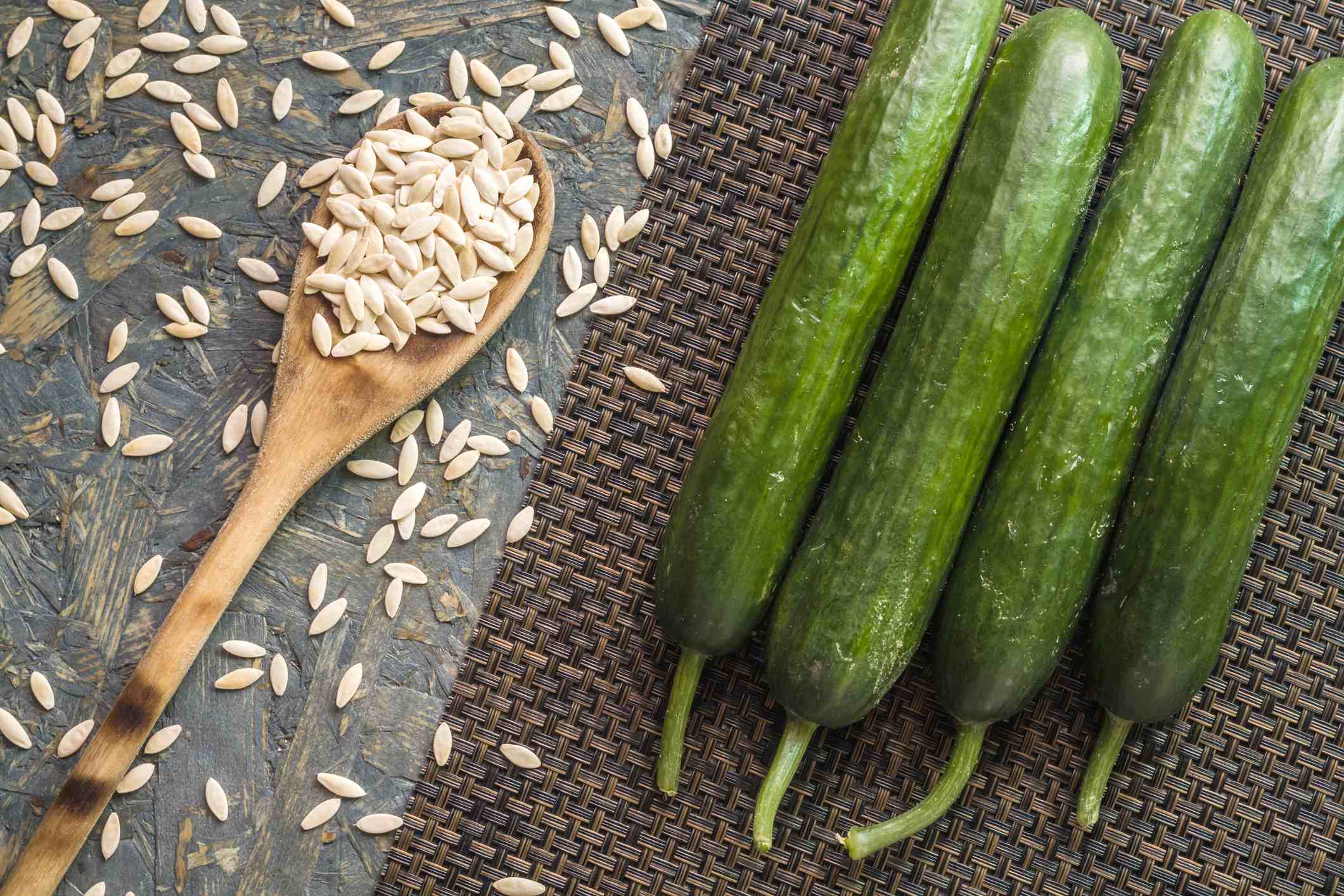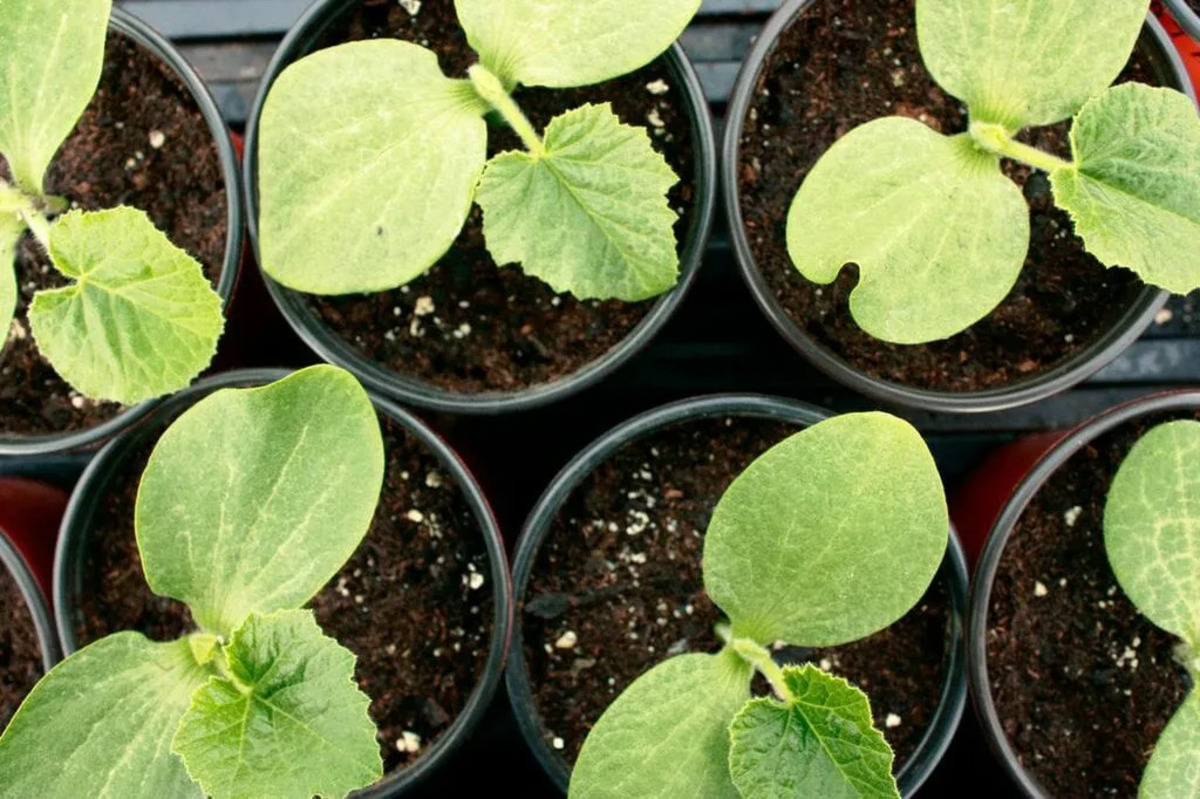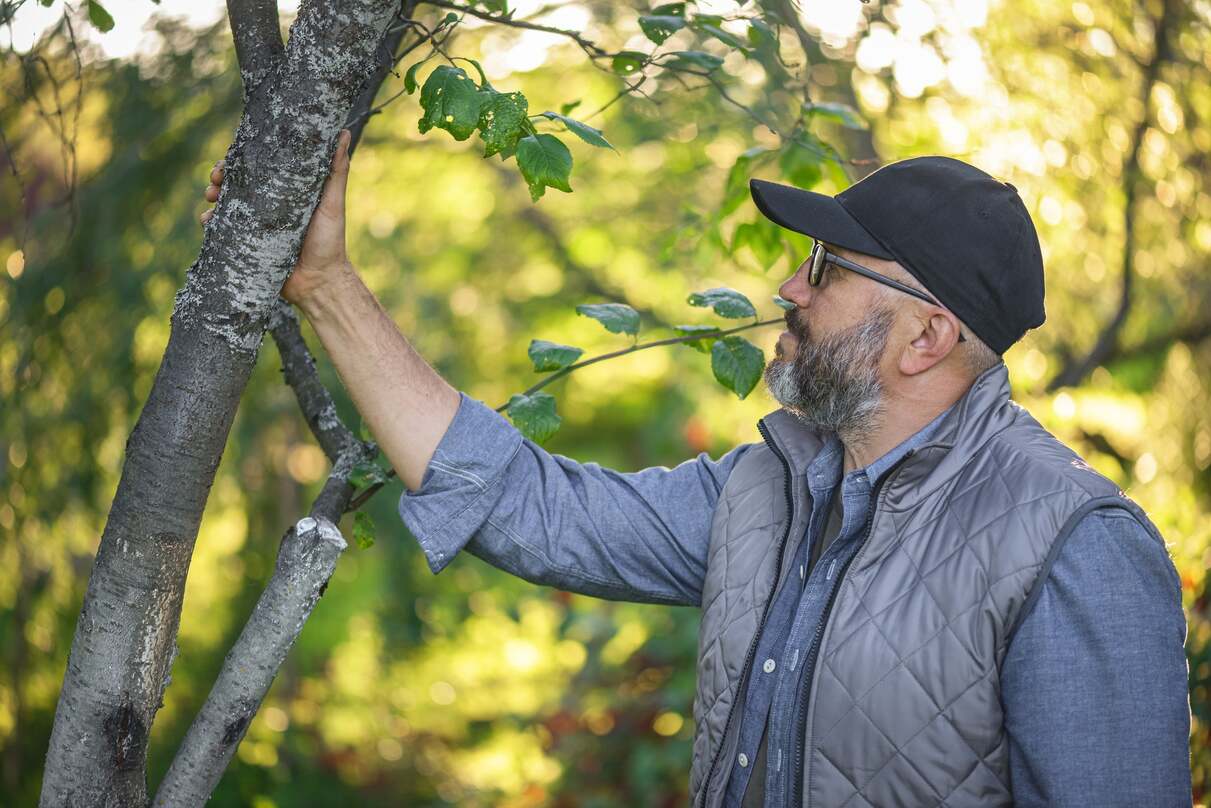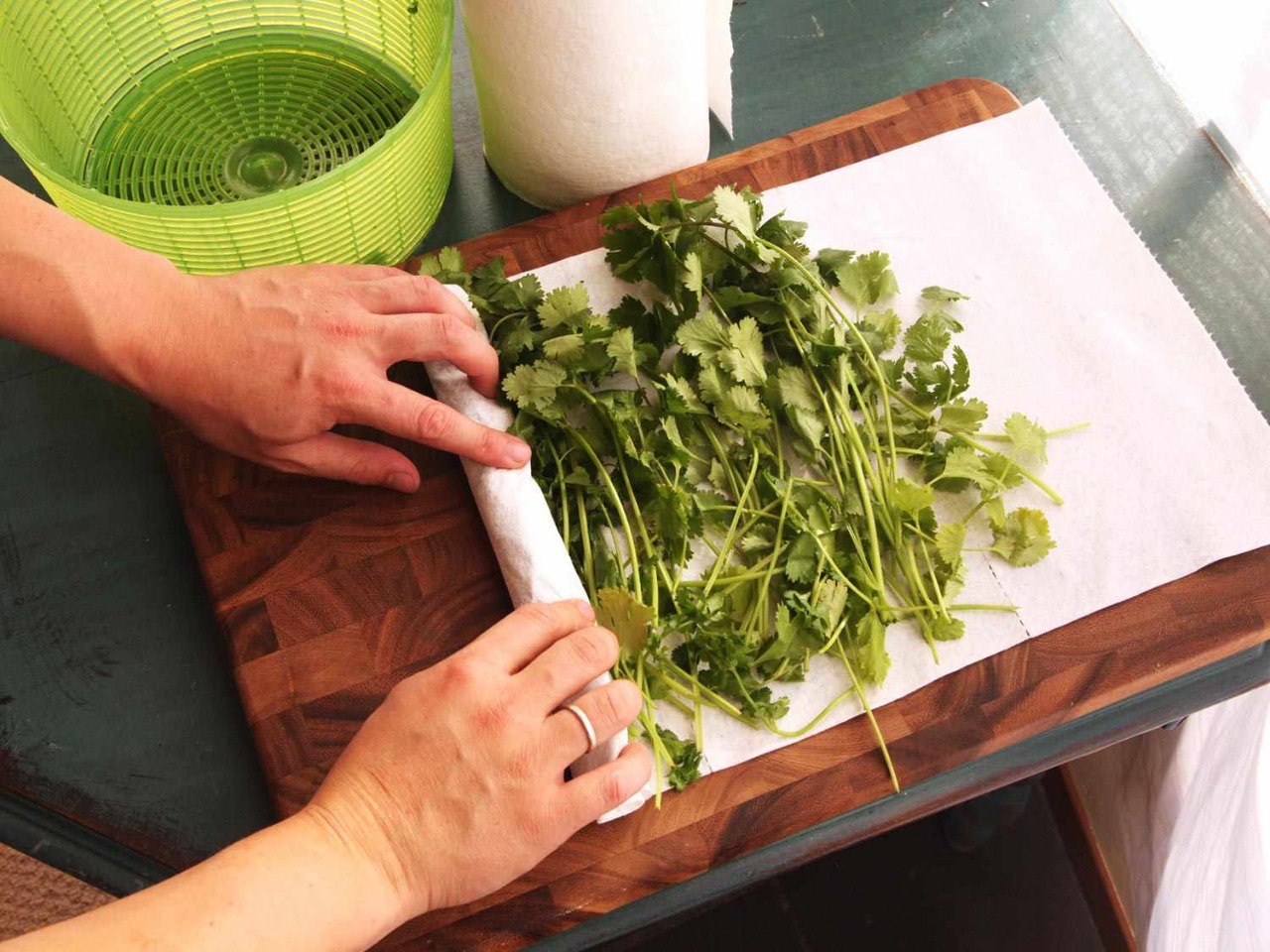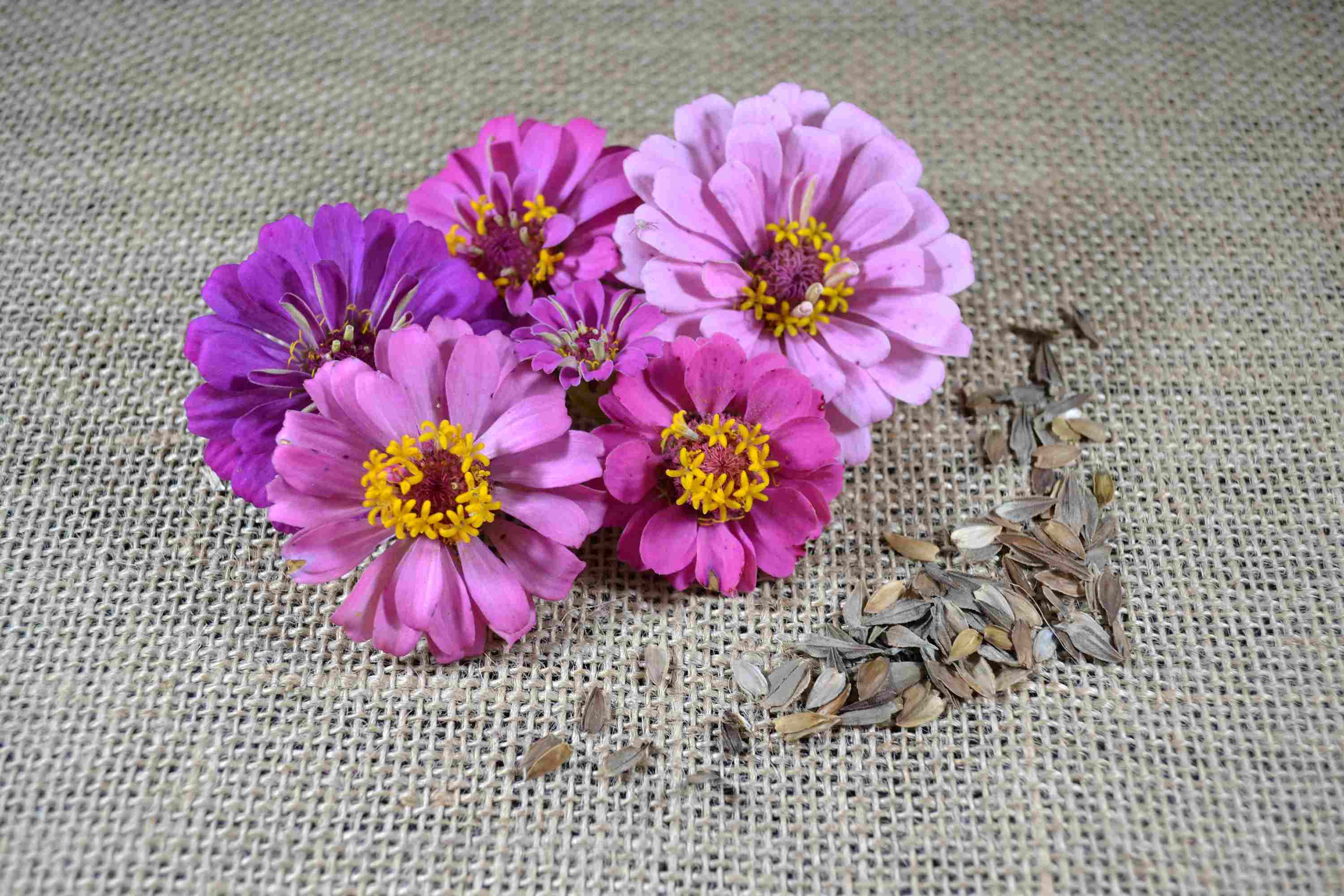Home>Types of Gardening>Edible Gardening>How To Save Seeds From Squash For Planting
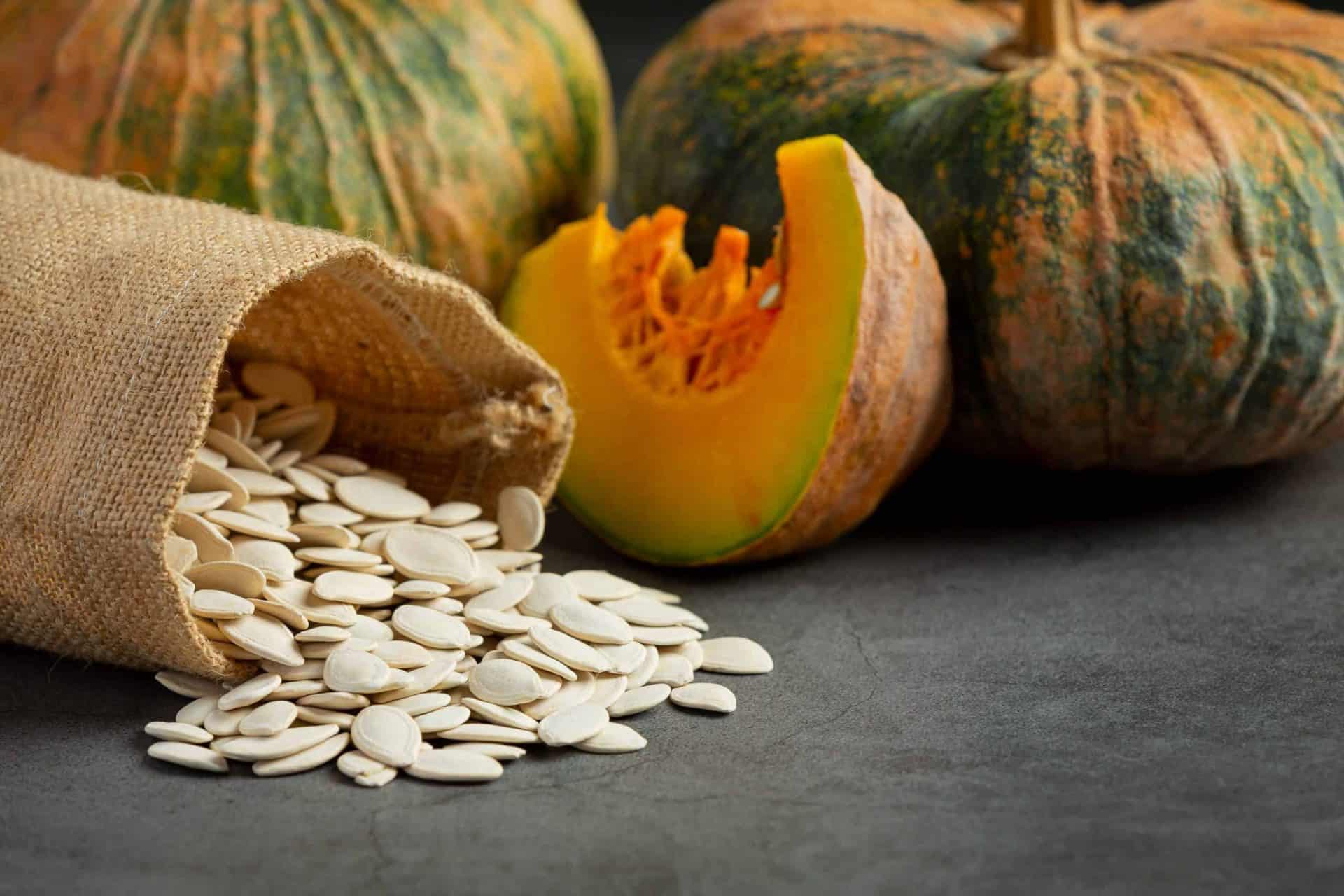

Edible Gardening
How To Save Seeds From Squash For Planting
Modified: January 22, 2024
Learn how to save seeds from squash for planting in your edible garden. Discover the steps to ensure successful seed saving and future harvests.
(Many of the links in this article redirect to a specific reviewed product. Your purchase of these products through affiliate links helps to generate commission for Chicagolandgardening.com, at no extra cost. Learn more)
Table of Contents
Introduction
Welcome to the world of edible gardening! There is something incredibly satisfying about growing your own food, and one of the most rewarding aspects is being able to save seeds from your favorite plants to continue the cycle of growth year after year. In this article, we will explore the process of saving seeds from squash, a popular and versatile vegetable that is relatively easy to grow.
Squash, part of the Cucurbitaceae family, comes in various shapes, sizes, and colors. From the vibrant yellow of a summer squash to the rich orange of a winter squash, these plants not only provide delicious additions to your meals but also offer an opportunity for seed saving.
Why save seeds from squash, you may wonder? Well, there are several compelling reasons. First and foremost, saving seeds allows you to select and preserve the traits you admire most in your plants. By saving seeds from the most exceptional specimens, you can ensure the continuation of desirable characteristics like flavor, texture, and disease resistance.
Moreover, saving seeds from your own squash plants can be a cost-effective way to grow your garden year after year. Rather than purchasing seeds or seedlings each season, you can rely on the seeds you saved to kick-start your next harvest.
Additionally, seed saving empowers you to preserve unique and heirloom varieties of squash. As commercial agriculture focuses on a handful of high-yielding and uniform cultivars, many traditional squash varieties are at risk of being lost. By saving seeds from heirloom squash, you contribute to the preservation of genetic diversity and support the continued cultivation of these treasured plants.
In the following sections, we will guide you through the step-by-step process of saving, preparing, and storing squash seeds. So, let’s embark on this exciting seed-saving journey!
Why Save Seeds from Squash
Saving seeds from squash offers numerous benefits and is a practice worth considering for any edible gardener. Let’s explore some compelling reasons why you should save seeds from your squash plants:
- Preserve Desirable Traits: By saving seeds from your best-performing squash plants, you can preserve and promote the traits you value most. Whether it’s superior flavor, unique color, or exceptional disease resistance, saving seeds allows you to pass on these desirable characteristics to future generations of plants.
- Cost-Effective: One of the significant advantages of saving seeds is that it can save you money in the long run. Instead of purchasing seeds or seedlings each season, you can rely on the seeds you saved from previous harvests to start your new plants. This can significantly cut down on your gardening expenses.
- Genetic Diversity: Commercial agriculture tends to focus on a limited number of high-yielding and uniform squash varieties. By saving seeds from heirloom or rare varieties, you contribute to the preservation of genetic diversity. This is crucial for maintaining a robust and resilient food system, as it ensures that we have access to a wider range of flavors, textures, and nutritional profiles.
- Adaptation to Local Conditions: When you save seeds from squash plants that have successfully grown in your specific climate and soil conditions, you are essentially selecting for adaptability. Over time, this can help develop locally adapted varieties that are more likely to thrive in your garden, even in challenging conditions.
- Sustainable Gardening: Saving seeds aligns perfectly with sustainable gardening practices. It reduces reliance on external seed sources, promotes self-sufficiency, and decreases the environmental footprint associated with seed production and transport. By saving and exchanging seeds with fellow gardeners, you actively participate in the sharing economy and contribute to a more sustainable food system.
These are just a few of the compelling reasons to save seeds from your squash plants. Whether you’re a beginner or an experienced gardener, seed saving is an enjoyable and rewarding practice that allows you to connect with nature, preserve genetic diversity, and create a self-sustaining food garden.
Choosing the Right Squash for Seed Saving
When it comes to seed saving, selecting the right squash varieties is crucial. Not all squash types are suitable for seed saving, so it’s important to choose the ones that are most conducive to preserving their genetic material. Here are some factors to consider when selecting squash for seed saving:
- Open-Pollinated Varieties: Opt for open-pollinated or heirloom squash varieties rather than hybrids. Open-pollinated varieties are more likely to produce stable offspring with traits similar to the parent plants.
- Isolation Distance: Consider the isolation distance required for the squash variety you plan to save seeds from. Squash is primarily insect-pollinated, and different varieties can cross-pollinate if they are grown too close together. Maintaining sufficient distances between varieties can help preserve the purity of the seeds.
- Maturity Time: Choose squash varieties that have fully matured for seed saving. The fruits should be fully ripe and at the stage that is typically harvested for consumption. This ensures that the seeds inside the squash have reached their full potential for viability and quality.
- Quality and Health of Fruits: Only select squash fruits that are healthy, disease-free, and free from any deformities or abnormalities. By choosing the best specimens, you increase the chances of obtaining high-quality seeds with desirable traits.
- Favorite Varieties: Consider saving seeds from squash varieties that you personally enjoy. Saving seeds from your favorite squashes ensures that you can continue to grow and enjoy the flavors and textures that you love.
Remember to choose a diverse selection of squash varieties to maintain genetic diversity and to ensure a thriving seed-saving garden. By selecting the right squash types for seed saving, you are setting the foundation for successful and rewarding future harvests.
When to Harvest Squash Seeds
Knowing the right time to harvest squash seeds is crucial to ensure their viability and quality. Harvesting seeds at the proper stage of maturity maximizes the chances of successful germination and allows you to save seeds that are healthy and fully developed. Here are some guidelines to determine when to harvest squash seeds:
- Fully Mature Squash: Wait for the squash fruit to reach full maturity before harvesting the seeds. The squash should have developed its characteristic color and be firm to the touch. Different varieties of squash have different maturity times, so be sure to refer to the seed packet or do some research to understand the specific signs of ripeness for the variety you are growing.
- Harvest Time for Winter Squash: Winter squash varieties generally require a longer growing season compared to summer squash. The seeds are mature when the squash reaches its full size, the skin hardens, and the stem begins to dry out. The skin should be tough enough that you cannot easily puncture it with your fingernail.
- Harvest Time for Summer Squash: Summer squash varieties are generally harvested when they are still relatively young and tender. However, if you plan to save seeds from summer squash, allow a few fruits to stay on the vine until they fully mature. The fruit should be fully grown and slightly hard to the touch.
- Seed Cavity Appearance: To determine if the seeds are ready for harvesting, cut open a mature squash fruit and observe the seed cavity. The seeds should be well-formed, plump, and easily separate from the flesh of the fruit. Avoid harvesting seeds that appear undeveloped, shriveled, or discolored.
- Timing and Weather: It’s best to harvest squash seeds on a dry day to prevent excess moisture from compromising their quality. Avoid harvesting after a rain shower or during excessively humid conditions. The seeds should be thoroughly dried before storage to prevent mold or decay.
By paying attention to these indicators, you can ensure that you harvest squash seeds at their peak maturity, resulting in high-quality seeds that have the best chances of germination and successful propagation.
Preparing the Squash for Seed Extraction
Before you can extract the seeds from squash, it’s important to properly prepare the squash fruit. This preparation step ensures that the seeds are easily accessible and ready for extraction. Here’s how to prepare the squash for seed extraction:
- Harvest Timing: As mentioned in the previous section, ensure that the squash fruit is fully ripe and mature before you begin seed extraction. This ensures that the seeds inside the squash are fully developed and viable.
- Cleaning the Exterior: Start by cleaning the exterior of the squash fruit. Remove any dirt, debris, or mold that may be present on the skin. Use a soft cloth or a gentle brush, and if necessary, rinse the squash with clean water and pat it dry.
- Removing Stems and Leaves: Trim off any remaining stems or leaves attached to the squash. These could interfere with the extraction process and potentially introduce moisture that could affect the seed quality.
- Cutting the Squash: Carefully slice the squash open lengthwise using a clean and sharp knife. Take care not to cut through the seeds in the central cavity. This allows you to access the seeds inside for extraction.
- Scooping Out the Seeds: Use a spoon or a scooping tool to gently scrape out the seeds and pulp from the squash’s central cavity. Try to avoid damaging the seeds as you remove them. Place the extracted seeds in a clean bowl or container for further processing.
- Separating Seeds from Pulp: To separate the seeds from the surrounding pulp, fill the bowl or container with water. Swirl and agitate the seeds to separate them from the pulp. Healthy seeds will sink to the bottom, while any remaining pulp or debris will float to the top. Carefully pour off the floating material, being cautious not to lose any viable seeds.
- Seed Inspection: Before moving on to the cleaning and drying process, inspect the seeds for any visible signs of damage, mold, or discoloration. Discard any seeds that appear unhealthy or compromised.
By following these steps, you will have properly prepared your squash for seed extraction. The next steps involve cleaning and drying the seeds to ensure their long-term viability and storage.
Extracting Squash Seeds
Once you have prepared the squash by removing the seeds from the fruit, the next step is to extract the seeds from the surrounding pulp. This extraction process ensures that the seeds are clean and ready for further processing. Here’s how to extract squash seeds:
- Separating Seeds from Pulp: Place the seeds and pulp mixture into a fine-mesh sieve or colander. Rinse the seeds under running water, gently rubbing them with your fingers to remove any remaining pulp. Continue rinsing until the seeds are visibly clean and the pulp is fully washed away.
- Drying the Seeds: After separating the seeds from the pulp, spread them out in a single layer on a clean paper towel or a fine-mesh drying screen. Allow the seeds to air dry for several days, preferably in a warm and well-ventilated area. Ensure that the seeds are fully dry before proceeding to the next step.
- Seed Fermentation (Optional): Some gardeners choose to ferment squash seeds before drying them to remove any remaining pulp or coatings. To do this, place the seeds in a container filled with water and allow them to ferment for a day or two. Stir the mixture daily, and over time, the fermentation process will break down the pulp. Rinse the seeds thoroughly after fermentation and proceed with the drying process.
- Removing Chaff (Optional): After the seeds have dried, you may choose to remove any remaining chaff. Gently rub the dried seeds between your hands or use a strainer to separate the seeds from any remaining debris. This step is particularly useful if you prefer a cleaner, more refined batch of seeds.
By following these steps, you can effectively extract squash seeds from the pulp and prepare them for further cleaning and drying. The extracted seeds are now ready for cleaning and subsequent storage to ensure their long-term viability.
Cleaning and Drying Squash Seeds
After extracting the squash seeds, it’s crucial to clean and dry them properly to remove any remaining debris or moisture. Cleaning and drying the seeds ensure their long-term viability and storage. Follow these steps to clean and dry your squash seeds:
- Water Rinse: Place the extracted squash seeds into a sieve or a strainer. Rinse the seeds under running water, gently rubbing them between your fingers to remove any remaining pulp or debris. Rinse until the water runs clear, indicating that the seeds are clean.
- Drying Method 1: Air Drying: Spread the cleaned seeds out in a single layer on a clean paper towel or a fine-mesh screen. Ensure that the seeds are evenly spaced and not touching each other. Place them in a well-ventilated area away from direct sunlight. Allow the seeds to air dry for several days, or until they are completely dry and feel hard to the touch.
- Drying Method 2: Dehydrator: If you have a food dehydrator, you can use it to speed up the drying process. Spread the cleaned seeds onto the trays of the dehydrator, making sure they are in a single layer without overlapping. Set the dehydrator to a low temperature (around 100°F or 38°C) and allow the seeds to dry for a few hours or until they are fully dry and crisp.
- Seed Viability Test: If you want to ensure the quality and viability of the seeds, you can perform a simple germination test. Place a few dried seeds on a moistened paper towel or in a seed-starting tray filled with potting mix. Keep the seeds consistently moist and observe them for germination. This test can give you an idea of the overall germination rate of your saved seeds.
Once the seeds are fully dry, store them in a cool, dry place in an airtight container such as a glass jar or a Ziploc bag. Adding a desiccant packet or some rice grains to the container can help absorb any residual moisture and keep the seeds dry. Label the container with the seed variety and date of collection for easy reference.
Properly cleaned and dried squash seeds can remain viable for several years when stored under the right conditions. By taking the time to clean and dry the seeds thoroughly, you ensure that they are in optimal condition for successful germination and future planting.
Proper Storage of Squash Seeds
Proper storage of squash seeds is essential to maintain their viability and ensure successful germination in the future. Moisture, temperature, and light conditions can all affect the longevity of stored seeds. Follow these guidelines to store your squash seeds correctly:
- Dry Seeds Completely: Before storing squash seeds, make sure they are thoroughly dry. Any remaining moisture can lead to mold or seed damage during storage. Refer to the previous section on cleaning and drying for detailed instructions on how to dry your seeds properly.
- Cool and Dry Environment: Store your dried squash seeds in a cool and dry environment. Ideally, the temperature should be between 32°F (0°C) and 41°F (5°C) to optimize seed longevity. Avoid storing seeds in areas with high humidity or fluctuating temperatures, such as basements or garages.
- Airtight Containers: Place the dried squash seeds in airtight containers, such as glass jars, envelopes, or resealable plastic bags. Airtight containers help protect the seeds from moisture and prevent them from absorbing humidity from the surrounding environment. Label each container with the variety and date of collection for easy identification.
- Dark Storage: Store the seed containers in a dark place or use opaque containers to block light exposure. Excessive light can affect seed viability over time. Avoid storing seeds in transparent or clear containers that allow light to penetrate.
- Desiccant Packets: To further protect against moisture, consider adding desiccant packets (silica gel or rice grains) to the seed containers. Desiccants absorb excess moisture and help maintain the seeds’ dryness. Ensure the desiccant packets are not in direct contact with the seeds to avoid any chemical interactions.
- Monitoring and Seed Viability: Periodically check and monitor your stored squash seeds. Over time, some seeds may lose their viability, so it’s helpful to perform periodic germination tests to assess their germination rates. Replace any seeds that show signs of deterioration or have low germination rates to maintain a high-quality seed stock.
By following these storage guidelines, you can maximize the longevity of your squash seeds and ensure their viability for years to come. Properly stored seeds will provide you with a consistent and reliable seed source, allowing you to grow healthy and productive squash plants in your garden.
Benefits of Saving Seeds from Squash
Saving seeds from squash offers a range of benefits for edible gardeners and contributes to the overall sustainability of your gardening practices. Let’s explore some of the significant advantages of saving seeds from squash:
- Preserving Traits: By saving seeds from the best-performing squash plants, you can selectively preserve the traits that you find most desirable. This includes factors such as flavor, texture, color, and disease resistance. Saving seeds allows you to continue growing squash with the characteristics you appreciate most.
- Economical: Saving seeds from squash can lead to significant cost savings in the long run. Instead of purchasing new seeds or seedlings each season, you can rely on the seeds you saved and continue growing squash without any additional expenses. It is a cost-effective approach to building a sustainable and self-sufficient garden.
- Genetic Diversity: Commercial agriculture often focuses on a limited number of highly productive and uniform squash varieties. By saving seeds from diverse and heirloom squash varieties, you contribute to the preservation of genetic diversity within the species. This is crucial for maintaining a robust and resilient food system, as it allows for adaptation to changing environmental conditions and provides a broader range of flavors and nutritional profiles.
- Preserving Heirloom Varieties: Many traditional and heirloom squash varieties are at risk of disappearing as commercial agriculture favors hybrids and uniform cultivars. By saving seeds from heirloom squash, you help preserve these unique and culturally significant varieties for future generations. It is an act of safeguarding the history and traditions associated with these precious plants.
- Adaptation to Local Conditions: By saving seeds from squash plants that have successfully grown in your specific climate and soil conditions, you are actively selecting for adaptability. Over time, this helps develop locally adapted squash varieties that are more likely to thrive in your garden, even in challenging conditions. These locally adapted plants often require less intervention and are better equipped to resist local pests and diseases.
- Sustainable Gardening: Seed saving aligns perfectly with sustainable gardening practices. It reduces dependence on external seed sources, minimizes the use of resources associated with seed production, packaging, and transportation, and encourages self-sufficiency in the garden. By saving and sharing seeds with fellow gardeners, you actively participate in the exchange of knowledge and promote a more sustainable and resilient food system.
These benefits highlight the value of saving seeds from squash. It allows you to play an active role in preserving genetic diversity, adapting to local conditions, and cultivating a sustainable garden. By saving and sharing seeds, you contribute to the resilience and long-term viability of the edible gardening community.
Conclusion
Saving seeds from squash is a rewarding and practical practice for any edible gardener. It not only allows you to preserve the traits you love in your squash plants but also offers economic benefits and contributes to the preservation of genetic diversity. By selecting the right squash varieties, harvesting at the right time, and properly preparing and extracting the seeds, you can ensure the success of your seed-saving endeavors.
Properly cleaning, drying, and storing squash seeds is crucial to maintain their viability and quality. By following the guidelines for seed storage, you can enjoy a reliable and sustainable seed source that will provide you with delicious and nutritious squash for years to come.
Furthermore, saving seeds from squash not only benefits your own garden but also plays a role in the preservation of heirloom varieties and the overall resilience of our food system. By taking part in seed saving, you become an active steward of plant diversity and contribute to the cultivation of locally adapted plants.
So, why not embark on this seed-saving journey? Experiment with different squash varieties, save seeds from your favorite plants, and exchange seeds with fellow gardeners. Rediscover the joy and satisfaction of growing your own food, knowing that you are part of a bigger movement to conserve our rich agricultural heritage and promote sustainable gardening practices.

